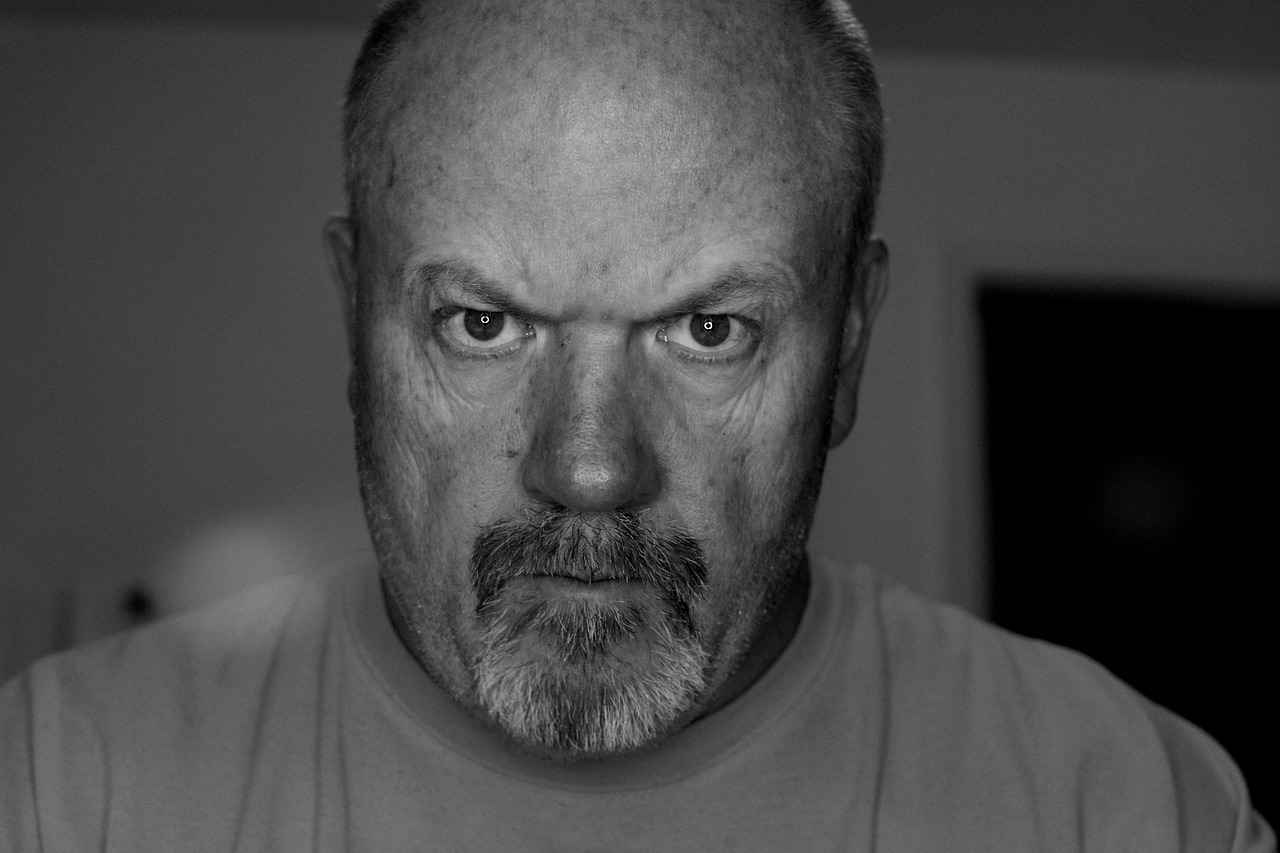This article explores the intricate transformation of Shigaraki, diving into his backstory, motivations, and the psychological elements that contributed to his rise as a formidable villain within the series.
The Origins of Shigaraki
Understanding Shigaraki’s origins is crucial for grasping his motivations. His traumatic childhood experiences and dysfunctional family dynamics played a significant role in shaping the villain he would eventually become.
Key Events that Shaped His Character
- Witnessing the death of loved ones
- Experiencing neglect and isolation
- Encounters with heroes that solidified his hatred
These pivotal moments highlight the trauma and loss that fueled his desire for destruction and chaos.
The Influence of All For One
All For One’s mentorship was instrumental in Shigaraki’s evolution. This relationship provided him with power and direction, but it also deepened his moral corruption and ambition.
Manipulation and Control
All For One’s manipulative tactics significantly influenced Shigaraki’s development. By exploiting Shigaraki’s vulnerabilities, he ensured loyalty while fostering further madness.
Empowerment through Villainy
As Shigaraki embraced his villainous path, he found empowerment in chaos. This shift from victim to villain marked a crucial turning point in his character arc.
Loss and Isolation
Shigaraki’s experiences with loss and isolation profoundly impacted his psyche. These feelings drove him to seek companionship in chaos, further solidifying his villainous identity.
Psychological Factors Behind His Madness
An exploration of the psychological aspects of Shigaraki’s character reveals the depth of his madness. Factors such as trauma, identity crisis, and existential dread all contribute to his villainy.
Trauma and Its Effects
Shigaraki’s traumatic experiences left deep psychological scars. Understanding how trauma manifests in his actions provides insight into his motivations and goals.
Identity Crisis and Self-Perception
Shigaraki’s struggle with identity and self-worth plays a significant role in his madness. His perception of himself as a villain is intertwined with his traumatic past.
Shigaraki’s Role in the Villain Alliance
Shigaraki’s position within the Villain Alliance is pivotal to his character development. His leadership and strategic mind have made him a formidable force against heroes.
Leadership Qualities
Shigaraki’s unique leadership style combines charisma with ruthlessness. His ability to inspire fear and loyalty among his followers showcases his evolution into a powerful villain.
Strategic Mindset
Shigaraki’s strategic thinking has allowed him to outmaneuver heroes and rivals alike. This tactical approach emphasizes his growth from a troubled youth to a calculated adversary.
The Impact of Shigaraki on the Series
Shigaraki’s evolution has significantly influenced the narrative of the series. His complex character adds depth to the story, challenging heroes and enriching the overall plot.
Challenges Faced by Heroes
Shigaraki’s emergence as a villain has posed unprecedented challenges for the heroes. His powers and motivations force them to confront their own beliefs and limitations.
Legacy of Madness
The legacy of Shigaraki’s madness extends beyond his character. His actions and ideology continue to shape the world around him, leaving a lasting impact on both heroes and villains.

The Origins of Shigaraki
Understanding the origins of Shigaraki is essential for comprehending his motivations and the complexities of his character. His early life, marked by trauma and dysfunctional family dynamics, laid the groundwork for the villain he would ultimately become. This exploration reveals how these formative experiences shaped his worldview and fueled his descent into madness.
Shigaraki, born as Tenko Shimura, was initially a typical child, but his life took a dark turn due to a series of traumatic events. His childhood was overshadowed by a toxic family environment where he felt neglected and unloved. The pivotal moment in his life came when he accidentally triggered his Quirk, leading to the tragic death of his family. This incident not only marked the end of his childhood but also instilled a profound sense of guilt and loss that would haunt him for years.
As he grappled with his newfound powers, Shigaraki found himself isolated from society. The feelings of abandonment and despair drove him deeper into madness. He became increasingly disillusioned with the world around him, perceiving it as a place filled with hypocrisy and betrayal. This perspective fueled his desire for chaos and destruction, as he sought to dismantle the very society that had rejected him.
Furthermore, the influence of All For One played a significant role in Shigaraki’s transformation. This mentor-mentee relationship provided him with the power and guidance he desperately sought, but it also manipulated his vulnerabilities, pushing him further down a path of villainy. The combination of Shigaraki’s traumatic past and All For One’s manipulative tactics created a perfect storm that shaped him into the formidable antagonist he is today.
In conclusion, the origins of Shigaraki are crucial to understanding his motivations and actions throughout the series. His tragic backstory, coupled with the influence of powerful figures, illustrates how a combination of trauma and manipulation can lead to the rise of a villain. By examining these elements, we gain deeper insights into the complexities of Shigaraki’s character and the psychological factors that drive him.

Key Events that Shaped His Character
Shigaraki’s Descent into Madness: How He Became the Ultimate Villain
Shigaraki’s journey into madness is not a straightforward tale of villainy; rather, it is a complex tapestry woven from trauma, loss, and pivotal moments that shaped his character. Understanding these key events is essential to grasp the motivations behind his chaotic ambitions.
Childhood Trauma and Family Dynamics
Shigaraki’s early life was riddled with emotional trauma. Growing up in a dysfunctional family, he faced neglect and abuse, which instilled a deep sense of worthlessness and anger. This tumultuous upbringing set the stage for his later actions, as he struggled to find his identity amidst chaos.
The Death of His Family
A significant turning point in Shigaraki’s life was the tragic death of his family. This loss not only marked the end of his childhood but also ignited a burning desire for revenge against a world he perceived as cruel and unyielding. This event solidified his transformation from a victim into a being fueled by chaos and destruction.
Meeting All For One
The encounter with All For One acted as a catalyst in Shigaraki’s evolution. Under All For One’s guidance, he gained immense power, but this came at a cost. The manipulation and control exerted by All For One deepened Shigaraki’s moral corruption, allowing his darker impulses to flourish.
Isolation and the Search for Belonging
As Shigaraki faced isolation from society, he sought companionship in his destructive actions. His need for connection, twisted by his experiences, led him to embrace villainy as a means of finding a place where he felt he belonged. This further entrenched his identity as a villain.
Conclusion
In summary, the key events that shaped Shigaraki’s character are deeply rooted in his traumatic past. Each moment of loss and manipulation contributed to his descent into madness, ultimately forging him into one of the most formidable villains in the narrative. Understanding these pivotal moments allows for a deeper comprehension of his motivations and the chaotic path he chose.
The Influence of All For One
All For One’s mentorship was a pivotal force in Shigaraki’s transformation from a troubled youth to a powerful villain. This relationship not only provided Shigaraki with immense power and direction but also significantly altered his moral compass, pushing him deeper into the abyss of ambition and corruption. Through a combination of manipulation and strategic guidance, All For One effectively shaped Shigaraki into a formidable adversary.
Initially, Shigaraki was a victim of his circumstances, marked by a traumatic childhood and feelings of isolation. However, under All For One’s tutelage, he began to embrace his darker impulses. This mentorship was not merely about gaining strength; it was a calculated move by All For One to exploit Shigaraki’s vulnerabilities. By fostering a sense of loyalty, All For One ensured that Shigaraki would become a loyal pawn in his grand scheme, ultimately deepening Shigaraki’s moral corruption.
As Shigaraki absorbed the lessons imparted by All For One, he found a sense of empowerment through villainy. This shift in perspective marked a critical turning point in his character arc, transforming him from a victim seeking revenge to an ambitious villain with a clear agenda. The chaos and destruction that Shigaraki began to embrace were not just expressions of power but also manifestations of his internal struggles.
In summary, All For One’s influence on Shigaraki was profound and multifaceted. It provided him with the tools to rise in power while simultaneously distorting his moral framework. This complex relationship serves as a testament to how mentorship can profoundly impact an individual’s path, particularly when intertwined with ambition and manipulation.
Manipulation and Control
In the intricate world of Shigaraki, the influence of All For One cannot be overstated. His manipulative tactics were not merely a means to an end; they were a carefully crafted strategy aimed at exploiting Shigaraki’s vulnerabilities. By recognizing and capitalizing on Shigaraki’s deep-seated fears and insecurities, All For One ensured unwavering loyalty from his protégé, while simultaneously driving him further into madness.
Shigaraki’s journey into villainy is marked by a series of psychological manipulations that shaped his identity. All For One’s approach involved not just mentorship but also a deliberate effort to instill a sense of dependence in Shigaraki. This dependency fostered a toxic relationship where Shigaraki’s self-worth became intertwined with his role as a villain.
- Exploitation of Vulnerabilities: All For One identified Shigaraki’s weaknesses, such as his troubled past and feelings of isolation, using them to mold him into a tool for chaos.
- Fostering Loyalty: By providing Shigaraki with power and a sense of purpose, All For One created a bond that was difficult for Shigaraki to break, even as it led him down a dark path.
- Encouragement of Madness: Rather than steering Shigaraki towards redemption, All For One encouraged his descent into madness, reinforcing destructive behaviors that would define his character.
The impact of this manipulation is profound. As Shigaraki embraced his villainous identity, he found a twisted sense of empowerment in chaos. This transformation from a victim of circumstance to a harbinger of destruction illustrates the devastating effects of manipulation on an individual’s psyche.
Ultimately, All For One’s tactics not only shaped Shigaraki’s character but also served as a cautionary tale about the dangers of manipulation and control. The legacy of this relationship is evident in Shigaraki’s actions, as he continues to navigate the fine line between loyalty to his mentor and his own spiraling madness.
Empowerment through Villainy
marks a pivotal theme in the transformation of characters within various narratives, particularly in Shigaraki’s journey. As he transitioned from a state of victimhood to embracing his identity as a villain, he discovered a profound sense of strength in the chaos that surrounded him. This evolution is not merely a shift in allegiance but a complex redefinition of self that speaks to the psychological intricacies of his character.
Initially, Shigaraki was a tragic figure, burdened by loss and isolation. His traumatic childhood experiences left him feeling powerless and abandoned. However, as he delved deeper into villainy, he began to perceive chaos not as a source of despair but as a catalyst for empowerment. This newfound perspective allowed him to reclaim agency over his life, transforming his pain into a weapon against those he deemed responsible for his suffering.
Shigaraki’s embrace of villainy facilitated a significant shift in his self-perception. No longer constrained by the labels of victimhood, he began to view himself as a force of nature, capable of instilling fear and commanding respect. This transformation was further fueled by his relationship with All For One, who not only provided him with power but also reinforced his belief in the superiority of chaos over order. Shigaraki’s journey illustrates how the embrace of darkness can serve as a means of self-actualization, albeit through destructive means.
Moreover, Shigaraki’s empowerment through villainy reflects broader themes within the narrative, challenging the traditional notions of heroism and morality. His character invites audiences to question the nature of power and the consequences of embracing one’s darker impulses. In the end, Shigaraki’s evolution serves as a cautionary tale about the seductive allure of chaos and the potential for individuals to find strength in their most vulnerable moments.
In conclusion, the path of empowerment through villainy is fraught with complexities. Shigaraki’s journey from victim to villain encapsulates the tumultuous struggle for identity and agency within a chaotic world, making him one of the most compelling characters in the series.
Loss and Isolation
have been central themes in the life of Shigaraki, shaping his identity and actions throughout the series. These profound experiences have not only influenced his psyche but have also driven him to seek a sense of belonging in the most chaotic and destructive ways.
Growing up in a dysfunctional household, Shigaraki faced the trauma of loss at a young age. The absence of nurturing relationships left him feeling abandoned and isolated, which only intensified his feelings of despair. This emotional void became a breeding ground for his villainous tendencies, as he began to associate companionship with chaos and destruction.
As he navigated through life, Shigaraki’s encounters with loss were not limited to his family. The deaths of friends and the betrayal by those he once trusted further deepened his sense of isolation. Each loss chipped away at his already fragile psyche, pushing him further into a world where he believed that only chaos could fill the void left by those he lost.
In this state of despair, Shigaraki found a twisted sense of companionship in villainy. The chaos he created became a reflection of his inner turmoil, allowing him to forge connections with others who shared his disdain for the world. This shift marked a turning point in his character, as he transitioned from a victim of circumstance to a self-proclaimed villain seeking power and control.
Ultimately, Shigaraki’s experiences with have profoundly impacted his identity. They have driven him to embrace a life of chaos, solidifying his role as a formidable adversary in the narrative. Understanding these elements of his character provides insight into the motivations that fuel his actions and the depths of his madness.
| Key Themes | Description |
|---|---|
| Loss | Shigaraki’s experiences with abandonment and betrayal. |
| Isolation | The emotional void that drove him to seek chaos. |
| Companionship in Chaos | His connection with others through villainy. |
In conclusion, Shigaraki’s journey through serves as a poignant reminder of how trauma can shape an individual’s path. His transformation into a villain is not just a tale of power; it is a complex narrative woven with threads of pain and the search for belonging in a chaotic world.

Psychological Factors Behind His Madness
Shigaraki’s character is a complex tapestry woven from threads of trauma, identity crisis, and existential dread. Each of these psychological factors plays a crucial role in shaping his descent into madness, ultimately leading him to become one of the most formidable villains in the series.
- Trauma and Its Effects: Shigaraki’s formative years were marked by profound trauma. The loss of his family and the subsequent isolation left deep psychological scars. These experiences manifested in his actions, driving him towards a path of destruction. Understanding the impact of trauma on his psyche is essential in grasping his motivations and the chaos he seeks to unleash.
- Identity Crisis and Self-Perception: A significant element of Shigaraki’s madness stems from his struggle with identity. He grapples with feelings of worthlessness and confusion about who he truly is. This identity crisis is compounded by his traumatic past, leading him to embrace a villainous persona as a means of coping. His perception of himself as a villain is not merely a choice but a reflection of his fractured self-image.
- Existential Dread: Shigaraki’s journey is also marked by a profound sense of existential dread. As he navigates a world filled with heroes and villains, he confronts the futility of existence. This dread fuels his desire to bring about chaos, as he believes that only through destruction can he find meaning in his life. This philosophical struggle adds another layer to his character, making him more than just a typical antagonist.
In summary, the psychological aspects of Shigaraki’s character reveal a tortured soul grappling with the consequences of his past. His trauma, identity crisis, and existential dread are not just background details; they are the driving forces behind his villainy. Understanding these factors is crucial for anyone seeking to comprehend the depth of his madness and the chaos he seeks to unleash upon the world.
Trauma and Its Effects
Shigaraki’s journey into villainy is deeply intertwined with his traumatic experiences, which have left profound psychological scars. These scars manifest in various ways, shaping his actions and motivations throughout the series.
Understanding the effects of trauma on Shigaraki’s psyche is essential to grasping his character. His childhood was marred by violence and neglect, which fostered feelings of abandonment and rage. As a result, he developed a distorted worldview where he equated strength with power and domination.
- Childhood Trauma: The loss of his family and the violence he endured created a foundation of pain that influenced his future choices.
- Manifestation of Anger: Shigaraki’s anger often translates into destructive behaviors, as he seeks to exert control over his chaotic life.
- Isolation: His traumatic past led to a sense of isolation, pushing him further into villainy as he sought companionship in chaos.
Moreover, his relationship with All For One compounded these effects. Rather than healing, Shigaraki’s trauma was exploited, deepening his madness and ambition. This manipulation not only reinforced his negative self-image but also solidified his role as a villain.
As Shigaraki embraced his identity, he found a twisted sense of empowerment in his chaos. This transformation marked a critical turning point in his character arc, as he shifted from a victim of circumstances to a self-proclaimed harbinger of destruction. The psychological complexities of Shigaraki illustrate that his villainy is not merely a product of evil intent but rather a response to a lifetime of trauma.
In conclusion, Shigaraki’s experiences with trauma significantly shape his actions and motivations. By examining these psychological factors, we gain valuable insights into his character, ultimately enriching our understanding of his role in the series.
Identity Crisis and Self-Perception
Shigaraki’s journey through identity crisis and self-perception is a profound exploration of how trauma can distort one’s view of themselves. His perception as a villain is not merely a choice but a culmination of his experiences and the psychological scars they left behind. Understanding this aspect of Shigaraki’s character is essential to grasp the complexities of his actions and motivations.
From a young age, Shigaraki faced immense trauma. The loss of his family, coupled with feelings of abandonment and neglect, led him to question his worth and place in the world. These early experiences fostered a sense of self-loathing and confusion, driving him deeper into the darkness. The more he struggled to find his identity, the more he embraced the notion of being a villain, believing it to be the only path available to him.
Shigaraki’s relationship with All For One further complicates his self-perception. Instead of guiding him towards healing, All For One exploits Shigaraki’s vulnerabilities, reinforcing the idea that he is destined for destruction. This manipulation not only cements Shigaraki’s identity as a villain but also exacerbates his internal conflict, making him feel more isolated and misunderstood.
- Trauma’s Role: Shigaraki’s traumatic past creates a lens through which he views himself, leading to a distorted self-image.
- Manipulation: All For One’s influence plays a critical role in shaping Shigaraki’s villainous identity.
- Isolation: His feelings of abandonment drive him to seek acceptance in chaos and destruction.
Ultimately, Shigaraki’s identity crisis serves as a powerful narrative device, illustrating how a person’s past can shape their present reality. His struggle with self-worth not only highlights his madness but also invites the audience to reflect on the broader themes of identity and redemption within the series.

Shigaraki’s Role in the Villain Alliance
is a crucial aspect of his character development within the series. As a central figure, Shigaraki’s influence extends beyond mere villainy; it encompasses leadership, strategy, and the psychological complexities that define him.
Shigaraki’s position within the Villain Alliance is pivotal to his character development. His leadership and strategic mind have made him a formidable force against heroes. Through his evolution, he has transformed from a troubled individual into a calculated adversary capable of orchestrating complex plans that challenge the very fabric of hero society.
| Aspect | Details |
|---|---|
| Leadership Qualities | Shigaraki exhibits a unique blend of charisma and ruthlessness. He inspires both fear and loyalty among his followers, which is essential for maintaining the cohesion of the Villain Alliance. |
| Strategic Mindset | His ability to devise intricate strategies allows him to outmaneuver heroes and rival villains alike, highlighting his growth from a vulnerable youth to a formidable tactician. |
Shigaraki’s leadership style is characterized by a no-nonsense approach, where he prioritizes results over emotions. This pragmatic view enables him to make tough decisions, often sacrificing personal connections for the greater goal of chaos and destruction. His followers respect his decisiveness, which further solidifies his authority within the Alliance.
Moreover, Shigaraki’s strategic acumen is evident in his ability to adapt to changing circumstances. He often evaluates the strengths and weaknesses of both his allies and enemies, allowing him to exploit opportunities that others might overlook. This adaptability not only reinforces his position but also enhances the overall effectiveness of the Villain Alliance.
In conclusion, Shigaraki’s role in the Villain Alliance is not just about being a villain; it is about the intricate dynamics of leadership and strategy that define his character. His journey illustrates how personal trauma can fuel a desire for power, ultimately shaping him into one of the most compelling antagonists in the series.
Leadership Qualities
Shigaraki’s leadership style is a fascinating amalgamation of charisma and ruthlessness. This combination allows him to maintain a strong grip on his followers while simultaneously instilling a sense of fear. His evolution into a powerful villain is marked by his ability to inspire unwavering loyalty, even in the face of his violent tendencies.
- Charismatic Influence: Shigaraki possesses a natural charm that draws people to him. His ability to articulate a vision of chaos resonates with those who feel marginalized or powerless, making them more susceptible to his influence.
- Fear as a Tool: While charisma plays a significant role in his leadership, Shigaraki’s ruthlessness ensures that his followers remain obedient. The fear of his unpredictable nature compels them to act in accordance with his desires, solidifying his control over the group.
- Strategic Manipulation: Shigaraki’s leadership extends beyond mere charisma and intimidation. He is a master strategist, often manipulating situations to his advantage. This strategic thinking not only showcases his intelligence but also reinforces his position as a formidable leader.
- Empowerment through Destruction: Shigaraki’s followers often find a sense of empowerment through their association with him. By embracing chaos and destruction, they feel liberated from societal constraints, further deepening their loyalty to his cause.
In essence, Shigaraki’s unique blend of charisma and ruthlessness has allowed him to carve out a significant place in the villain hierarchy. His ability to inspire fear while fostering loyalty makes him not only a compelling character but also a formidable adversary for heroes. As he continues to evolve, his leadership qualities will undoubtedly play a crucial role in the ongoing narrative.
Strategic Mindset
Shigaraki’s journey from a troubled youth to a formidable villain is marked by an evolution in his strategic thinking. This transformation is not merely a result of his encounters with powerful adversaries but is deeply rooted in his personal experiences and psychological development.
Initially, Shigaraki was a lost and vulnerable individual, grappling with the trauma of his past. However, as he encountered various heroes and rivals, he began to hone his tactical skills. His ability to outmaneuver opponents is a testament to his growth in understanding both the battlefield and the psychology of those he faces.
One of the key aspects of Shigaraki’s strategic mindset is his ability to anticipate his enemies’ moves. This foresight allows him to prepare counter-strategies that often leave heroes at a disadvantage. For instance, he studies their weaknesses and exploits them, showcasing his analytical approach to conflicts.
Moreover, Shigaraki’s relationship with All For One significantly influenced his tactical acumen. Under All For One’s mentorship, he learned the importance of manipulation and deception in achieving his goals. This guidance not only empowered him but also instilled a sense of calculated ruthlessness that defines his character today.
In addition to his personal growth, Shigaraki’s strategic thinking is reflected in his leadership within the Villain Alliance. He commands respect and loyalty through a combination of charisma and fear, effectively rallying his followers to execute complex plans. His ability to inspire others to act in unison demonstrates a keen understanding of group dynamics.
In conclusion, Shigaraki’s strategic mindset is a crucial element of his character. It highlights his evolution from a chaotic youth to a master tactician, capable of challenging even the most seasoned heroes. This transformation not only enriches his character but also adds depth to the overarching narrative of the series.

The Impact of Shigaraki on the Series
Shigaraki’s evolution throughout the series has been nothing short of remarkable, significantly influencing the overall narrative and character dynamics. His journey from a troubled youth to a formidable villain is not just a tale of transformation; it serves as a catalyst for numerous plot developments and character arcs.
Challenging the Heroes
As Shigaraki rises in power, he presents unprecedented challenges for the heroes of the series. His unique abilities and motivations force them to confront their own beliefs, ethics, and limitations. This confrontation is crucial, as it not only tests their physical capabilities but also their moral convictions. The psychological warfare he engages in reveals deeper layers of heroism, pushing characters like Midoriya and Todoroki to evolve in response to his threats.
Enriching the Overall Plot
Shigaraki’s complex character adds a rich layer of depth to the storyline. His backstory, filled with trauma and loss, resonates with themes of isolation and despair, making him a relatable antagonist. This complexity invites viewers to explore the nuances of villainy, blurring the lines between good and evil. The series uses Shigaraki’s character to explore broader societal issues, such as the impact of neglect and the cycle of violence.
Legacy of Madness
The legacy of Shigaraki’s madness extends beyond his immediate actions. His ideology and the chaos he instigates continue to shape the world around him, influencing both heroes and villains alike. As the narrative unfolds, it becomes clear that Shigaraki is not just a villain; he is a reflection of the darker aspects of society, challenging both characters and viewers to reflect on their own realities.
In conclusion, Shigaraki’s evolution is pivotal to the series, serving as a driving force for conflict and character development. His presence challenges the heroes and enriches the plot, leaving a lasting impact that resonates throughout the narrative.
Challenges Faced by Heroes
As the world of heroes and villains continues to evolve, Shigaraki’s emergence as a formidable antagonist has introduced a myriad of challenges for the heroes. His unique abilities and complex motivations compel the heroes to reassess their own beliefs and limitations, creating a dynamic that reshapes the landscape of their battles.
Unprecedented Powers
Shigaraki possesses a range of powers that make him a significant threat. His decay ability allows him to disintegrate anything he touches, which not only poses a physical danger but also serves as a psychological weapon against his opponents. Heroes must constantly adapt their strategies to counteract this overwhelming force.
Confronting Personal Beliefs
Shigaraki’s motivations stem from deep-seated trauma and a desire for chaos. This complexity forces heroes to confront their own ideologies. They must grapple with questions of justice, morality, and the very essence of what it means to be a hero. This introspection can lead to doubt and hesitation, which Shigaraki exploits.
Strategic Manipulation
Shigaraki’s cunning nature allows him to manipulate situations to his advantage. His ability to form alliances and exploit the weaknesses of heroes creates an ever-evolving battlefield. The heroes must remain vigilant, adapting their tactics to counter his strategic maneuvers.
Psychological Warfare
Beyond physical threats, Shigaraki engages in psychological warfare. He targets the heroes’ fears and insecurities, challenging their resolve. This psychological strain can lead to mistakes in judgment and weaken their collective strength.
Conclusion
In summary, Shigaraki’s rise as a villain has introduced profound challenges for the heroes. They are not only forced to confront his extraordinary powers but also their own beliefs and motivations. This ongoing struggle enriches the narrative, making it a compelling exploration of heroism in the face of overwhelming adversity.
Legacy of Madness
The legacy of Shigaraki’s madness is not merely a reflection of his character but a profound influence that permeates the entire universe of heroes and villains. His actions have created ripples that challenge the very fabric of morality and power in this world. As we delve deeper into the implications of his ideology, it becomes clear that Shigaraki’s impact extends far beyond his immediate surroundings.
Shigaraki’s philosophy of chaos and destruction resonates with many, leading to a growing following among those disillusioned by the current societal structure. His belief that strength lies in the ability to dismantle existing norms has inspired a new wave of villains who seek to emulate his approach. This cult of personality not only threatens heroes but also destabilizes the very communities they seek to protect.
Furthermore, Shigaraki’s actions have forced heroes to confront their own limitations and moral dilemmas. The constant threat he poses acts as a catalyst for growth among heroes, pushing them to evolve and adapt in ways they never imagined. This dynamic creates a complex relationship between heroes and villains, where each side learns from the other, albeit in a twisted manner.
In addition, the psychological impact of Shigaraki’s madness extends to the innocent bystanders caught in the crossfire. Families are torn apart, and communities are shattered as his ideology spreads. The emotional scars left behind serve as a reminder of the cost of villainy and the price of unchecked ambition.
Ultimately, the legacy of Shigaraki’s madness serves as a stark warning of the dangers of radical ideologies and the consequences of a society that fails to address its flaws. His influence will undoubtedly continue to shape the landscape of heroism and villainy, leaving an indelible mark on the world.
